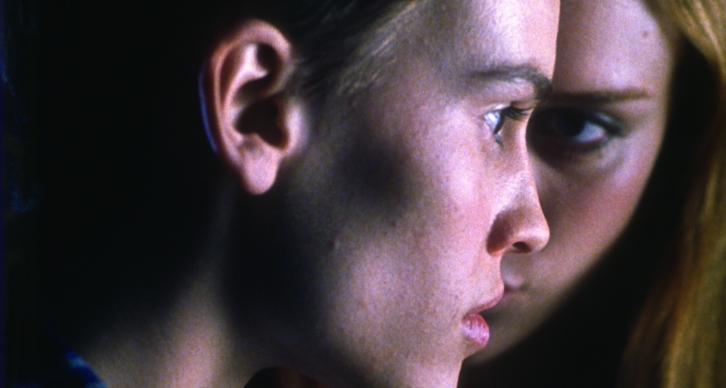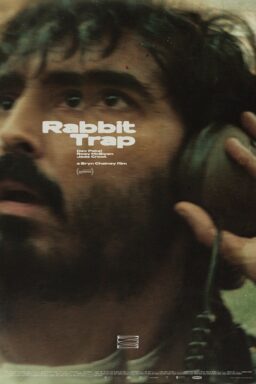This piece was published on October 23, 2019 and is being republished for Women Writers Week.
When “Boys Don’t Cry” hit theaters in the United States, 20 years ago this month, acceptance of and empathy for transgender people in America was not yet a thing. The word was another decade at least from entering the common vernacular, and the reality of being trans was so difficult to conceive of that our lived experiences were more suited for the sensationalized drama of Jerry Springer than serious public interest or concern.
That isn’t conjecture. References to Jerry Springer appear all over the initial coverage of “Boys Don’t Cry.” Reviewers made note of how the story of Brandon Teena, the trans man whose life and death inspired Kimberly Peirce’s film, was ready-made for an episode of that ’90s relic of trashy daytime television. What other tools, these writers seemed to suggest, did audiences have to make sense of the tragic story contained in this little indie picture?
For the American film-going audience, at least, there were none. Human, sympathetic portrayals of trans people, especially trans men, were almost entirely absent from pre-millennium screens. Trans-related characters in the movies prior to “Boys Don’t Cry,” with a few exceptions of course, are largely found in two kinds of films: cross-dressing comedies and trans killer horror films. There was no Chaz Bono and Caitlyn Jenner in the headlines. No Laverne Cox on television or Albert Nobbs at the Oscars. Rather, there was “Tootsie,” “Ladybugs,” and “Mrs. Doubtfire,” putting movie stars in drag for laughs, and there was “Psycho,” “Sleepaway Camp,” and “The Silence of the Lambs,” portraying transsexuals as unhinged psychotic serial killers.
Both of these genres use trans-ness as a plot device: a means for cis folks to achieve a goal on the one hand, a pathological cause of violence on the other. Neither are interested in the embodied humanity of actual queer people. They’re not about being queer. In “Boys Don’t Cry,” Kimberly Peirce begins to build a visual language for how to be trans on camera. She’s interested in how trans bodies are looked at, and what it means to perceive trans people as people, not gags or murderers.
“Boys Don’t Cry” was the first mainstream, popular cinematic portrait of an actual trans person that I encountered. And despite its tragic outcome, the film became my personal empathy machine, to quote Roger Ebert. It offered me the chance to gain a deeper understanding of the transgender experience that I have now come to embody. It was the first time I encountered an argument—though it didn’t use these terms—that trans people deserved humanity. That a person in the real world might want to undergo a ‘sex change.’ These were truly radical claims in 1999.
Peirce’s film starts with a haircut. “Shorter,” says a young man in a flannel shirt and blue jeans. “That’s short enough,” his friend replies. The young man, Brandon Teena, is all energy as he examines himself in the mirror, fixing his hair and packing a sock into his jeans. He radiates excitement and naivete, sensing the possibility of a future as a man, and seemingly unconcerned about the world will around him. “So you’re a boy,” his friend says, watching Brandon fuss over himself. “Now what?”

Brandon’s first move is to hit the bar. Girls, it turns out, fall quick for Brandon. He wears his newly expressed masculinity buoyantly, eager to take up any challenge that arises. His confidence is magnetic. His first night out he meets a girl, starts a bar fight, runs from the police, falls in with a new group of friends, and heads out of town in a stranger’s car accompanied by the two men who will be responsible for his death.
Peirce’s camera understands that the body of a trans person, be it Brandon’s or my own, is a public text, read and reread endlessly. Whether by his girlfriend, who caresses his face with her finger reassuring him “you don’t have to be afraid; or her mother, who gets a close look at him, concluding, “you look like a movie star,” or Brandon’s himself, drawn to his reflection in the mirror.
And yet, as a piece of queer representation, “Boys Don’t Cry” has faults. Director Kimberly Peirce, a genderqueer lesbian, has been criticized for the manner in which she portrayed Brandon’s rape and murder; for excluding the African-American man Phillip Devine who was killed alongside Brandon; and for casting the straight, cisgender actress Hilary Swank in the lead. These are all fair, and deserving critiques.
It also must face up to the fact that it represents trans identity as a pathway to horrific, violent ends. And yet, I admit that for some reason, despite how hard this movie is to watch, I’ve returned the film over and over. In the past twenty years, “Boys Don’t Cry” has become a near perfect art object in my imagination, helping me understand my own body, as a trans person, and what having a trans body means in public. I’m starting to think that what draws me to the film is what pushes so many queer viewers away: Peirce’s betrayal of Brandon’s embodied queerness.
Peirce exploits the Hitchcockian suspense in these examinations. But she’s also building an authentic consequence attached to Brandon’s body. There’s dignity in these sequences, as Peirce invites viewers into Brandon’s point-of-view; we feel his fear of close observation, and his relief when he is seen for who he is.
But as Brandon’s fate becomes inevitable, Peirce, in perhaps a cruel fashion, betrays Brandon’s point of view. In doing so, Peirce repudiates her audience. In Brandon’s POV, audiences feel the gaze of unwanted examination. When the time comes, however, for Brandon to be stripped, Peirce forces viewers into the perspective of his attackers, John Lotter and Tom Nissen. We see Brandon not as he sees himself, but as his murderers do.

It’s a horrific turn. We must see Brandon’s body as Lotter and Nissen do: as an object deserving of humiliation and violence. As they strip him, Peirce lingers on Brandon’s struggling body, his small frame unable to free itself from their grip. Later, Peirce similarly photographs his rape, then doubles the trauma by intercutting the assault with Brandon’s recounting of the events to uncaring police officers. It is an appalling way to see a human being. But we are given no choice.
This past summer, I experienced that awfulness, again, that clinical dehumanized observation of trans bodies. I felt the fragile humanity of being trans; felt life move from normal to instantly dangerous. I can recall with perfect clarity the moment my eyes met the man on the train who would assault me 20 minutes later. He approached me, interacted in a light and jovial manner, but couldn’t keep from reading me, re-reading me. Scanning my body, my hair, my makeup. I knew within moments that this man was a risk to my life. I also knew there was no recourse for me to avoid it.
To explain the experience of that moment as I have (mostly in therapy), I used the cinematic language of perspective. I was torn from my own embodiment, and all I could feel of my worth was what my attacker saw. My identity was taken possession of by this stranger’s vision of me. What made me beautiful moments ago, my earrings and lipstick and light summer dress, suddenly became, even to me, justification for violence.
For 20 years, Kimberly Peirce has been holding her camera on Brandon Teena’s body as it is violated and murdered. I’ve had 20 years to look away. But, for me, it’s important not to avert my eyes. I’m lucky to have survived my attack. And I’m lucky to have access to the support necessary to recover my femininity and my confidence. Others are not so lucky, like Brandon Teena, and every trans person murdered for embodying their own lives.
The dedication to the embodiment of trans-ness—specifically via Brandon Teena—is the great contribution of “Boys Don’t Cry.” 20 years later, we can see its faults, and there are many. But the manner in which Brandon encapsulates the excitement and the fragility of a trans life, of being observed at every moment, remains a remarkable achievement.











